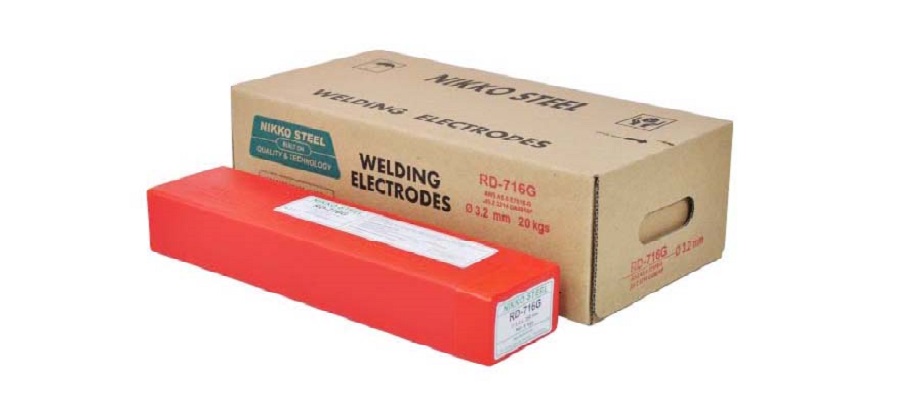LOW HYDROGEN ELECTRODE WITH GOOD TOUGHNESS AT -50 ºC
RD-716G

CLASSIFICATION
AWS A5.5 E7016-G | EN ISO 2560-A E 46 4 Mn1Ni B
PRODUCT DESCRIPTION
The design emphasis of the chemically basic flux is engineered to ensure the optimum weld metal properties demanded by the specification are fully met. The basic flux containing the appropriate alloying elements but minimal iron powder, is extruded onto a high purity ferritic core wire and bound with a blend of silicates that ensure both coating strength and a coating resistant to subsequent moisture absorption.
WELDING FEATURES OF THE ELECTRODE
The chemical nature of the flux together with its controlled coating factor allows the electrode to be used at relatively low amps. This factor together with the fairly fluid but quick freezing slag facilitate vertical up welding including controlled penetration root runs. Overall the arc is very stable, slag detachability is good, fillet welds are slightly convex and metal recovery is some 98% with respect to weight of the core wire
APPLICATIONS AND MATERIALS TO BE WELDED
PRESSURE VESSEL STEELS PLATES All grades up to BS 1501-225 FORGINGS All grades up to BS 1503-224 PIPES LT50 quality of grade 410 in BS 3603:1977 Such steels and similar are used for the fabrication of LPG tankers and storage vessels. The 1% nickel max meets NACE MR0175 requirements for corrosion resistance in marine environments
WELDING AMPERAGE AC and DC
OTHER DATA
Electrodes that have become damp should be re-dried at 150oC for 1 hour
APPROVED BY
LR – Grade 4Y H5